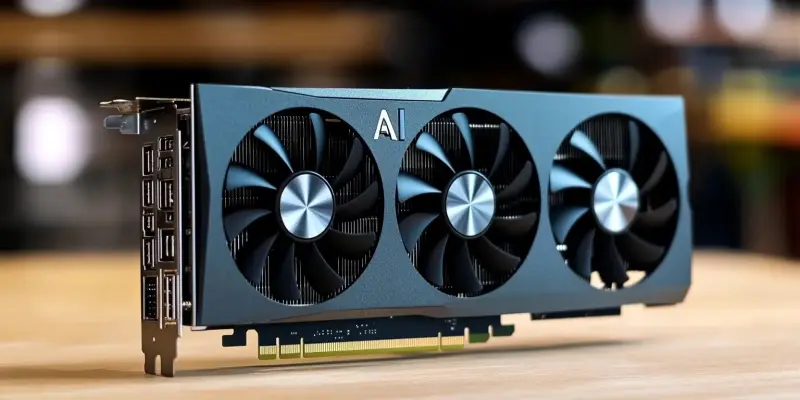Amidst growing anticipation and excitement ahead of the GeForce RTX 50 series launch, details surrounding the much-awaited GeForce RTX 5090D, a specialized version tailored for the Chinese market, have started making waves. Information leaking primarily from the Chiphell forums has sparked interest, with various Chinese tech media picking up on discussions about this unique variant. Despite the considerable buzz, the RTX 5090D appears to share many key attributes with the standard RTX 5090, particularly in terms of its base and boost clock speeds, pegged at 2.0 GHz and 2.4 GHz respectively.
AI Technological Advancements
Performance Metrics and Comparisons
A notable aspect that has caught the attention of reviewers is the relatively modest hardware improvements this generation brings compared to its predecessor. Indeed, the primary advancement in the RTX 5090D appears to arise from AI-driven technologies focused on enhancing performance rather than straightforward hardware upgrades. Official performance charts have underscored this trend, showing significant emphasis on DLSS (Deep Learning Super Sampling) capabilities. These charts make direct year-over-year comparisons with previous generations somewhat challenging. Nonetheless, gamers and tech enthusiasts have been curious to see how these AI enhancements translate into real-world performance metrics.
Performance evaluations indicate that even without the direct use of DLSS and ray tracing, the RTX 5090D manages to achieve a respectable approximate 20% boost in game performance and frame rates when adjusted to reduced memory speeds of 14Gbps, bandwidth, and core frequencies. This is a significant achievement attributed to the strength and sophistication of AI technology driving these optimizations. However, it’s important to note that with DLSS and ray tracing turned on, the card’s performance aligns quite closely with official claims, maintaining a high standard of graphical efficiency and quality.
Overclocking and Power Consumption
Overclocking enthusiasts may find the RTX 5090D offers limited potential compared to what they might have hoped for. Current BIOS estimates project power consumption can exceed 600W, but real-world practicalities suggest constrained possibilities. These upper limits on overclocking temper expectations substantially. Nevertheless, the AI advancements embedded within the card have picked up the slack, showing notable improvements in computational power which translates into enhanced gaming experiences. The RTX 5090D leverages significant AI advancements to deliver steady and reliable performance despite the unremarkable raw hardware gains.
Further insights from the review underscore the minimal differences in manufacturing tools between the RTX 5090 and its predecessor, the RTX 4090. This convergence indicates that improvements, while present, are not glaringly noticeable. Instead, the overarching consensus remains that the true benefits come from the AI performance enhancements rather than sheer raw performance capabilities. As a result, users should adjust their expectations accordingly, bearing in mind the subtle yet critical role AI-driven technologies play in squeezing out these gains.
AI Performance Boosts
DLSS and Ray Tracing Capabilities
DLSS and ray tracing capabilities stand out as key pillars of the AI technological advancements deployed in the RTX 5090D, providing noticeable performance boosts. DLSS, in particular, with its advanced algorithms, re-renders lower-resolution frames to higher resolutions, significantly reducing the computational load while maintaining sharp and vibrant visual output. With DLSS enabled, the GeForce RTX 5090D achieves remarkably high frame rates and graphical fidelity, which would otherwise demand more raw processing power. This highlights the transformative impact of AI in elevating user experiences to new levels.
Ray tracing, another significant feature, simulates intricate lighting effects with unparalleled precision, adding layers of realism to games. When combined with DLSS, the ray tracing capabilities of the RTX 5090D create stunning visual effects without heavily compromising performance. The synergy between DLSS and ray tracing underlines how AI-driven capabilities have become pivotal in the gaming industry, allowing gamers to enjoy more immersive experiences without the need for exorbitantly powerful hardware.
User Implications and Future Expectations
As anticipation grows around the launch of the GeForce RTX 50 series, excitement builds particularly for the GeForce RTX 5090D. This specialized version, created for the Chinese market, is generating a lot of interest. The primary source of information about this unique variant is the Chiphell forums, where leaks have caught the attention of Chinese tech media, fueling discussions. Despite the significant buzz surrounding the RTX 5090D, it seems to share many core features with the standard RTX 5090. Both models have the same base clock speed of 2.0 GHz and a boost clock speed of 2.4 GHz. While the excitement is palpable, the similarities in technical specifications suggest that the key differences may lie in other areas such as availability, pricing, or market-specific features. Enthusiasts are eagerly awaiting more detailed information to see how this variant stands apart from the standard model and fully understand the implications of these new developments in the graphics card market.

